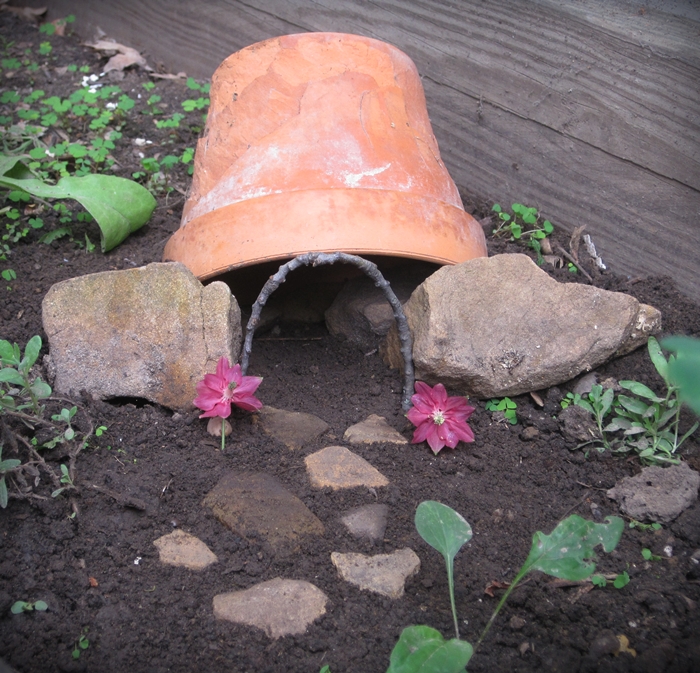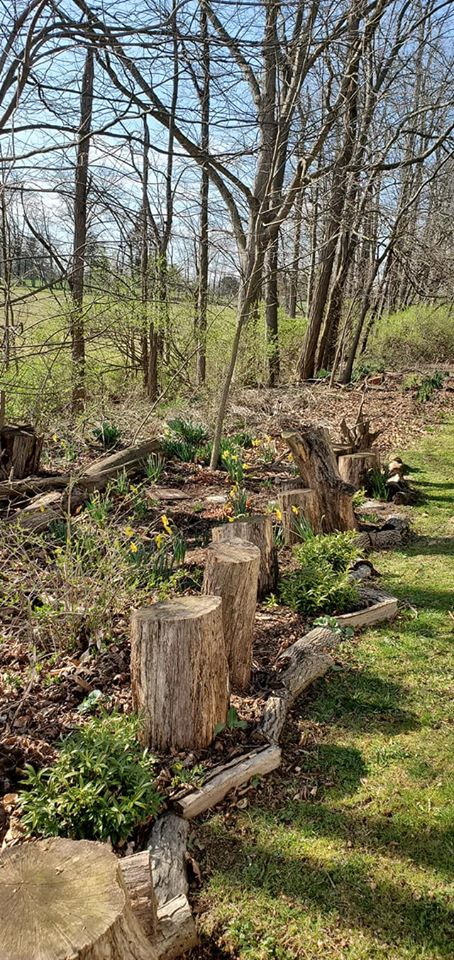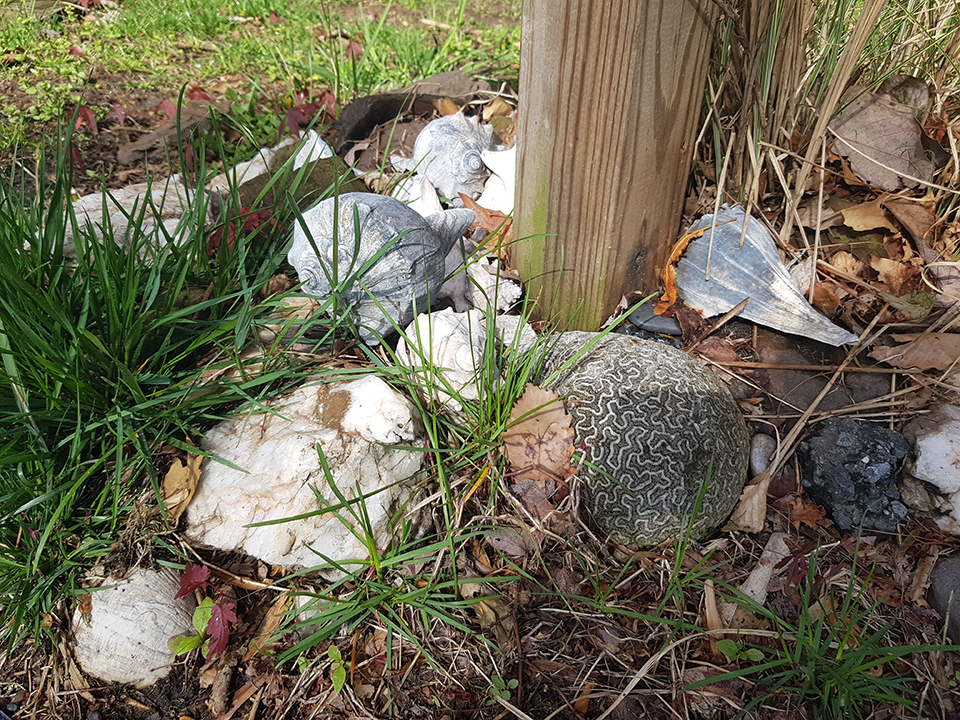Creating Backyard Wildlife Habitat While Sheltering in Place
Did you know? You probably have a lot of materials around the house and yard that can be repurposed to create backyard wildlife habitat. Don’t let quarantine hold you back from creating habitat! The following list contains some ideas on how to create habitat with limited supplies.
1) Start Seeds in Egg Cartons. Use cardboard egg cartons or toilet paper tubes to start seeds. For more information on biodegradable planting pots, check out our 2012 Habichat article.
2) Make a Toad Abode. Do you have old clay pots lying around? They can be intact or broken. If so, consider adding them to a shady area under bushes to create a makeshift toad abode. Loosening the soil under the pot can assist toads with cover. Check out our previous Habichat on Toad Abodes for more information.
3) Make Some Mud. Mason bees use mud to line their nests, and male butterflies often “puddle” by collecting minerals from mud. Keep a small patch of mud open by pollinator plants. The best soil is clayey soil that stays moist.
4) Use Old Stumps. Do you have a rotting stump in your yard? Add shallow-rooted plants and some soil to make it into a planter. If the wood isn’t too rotten, consider drilling holes into it to make a nesting area for mason bees. For more information on Building a Bee House, check out our previous Habichat on pollinators.
5) Make a Bird Bath. If you have a clay pot and saucer and don’t want to make a toad abode, consider making your own bird bath. Check out our Homemade Bird Bath article for more information.
6) Use Downed Logs. Have you had any recent trees fall? If so, consider using old logs to line garden beds. These areas can provide excellent habitat for insect-munching critters like salamanders and skinks. You can also create a small log pile as habitat but be sure not to place it within 10 feet of your foundation. Log piles too close to the house might invite unwanted visitors.
7) Just Add Rocks. Similar to logs, rocks can provide shelter for wildlife while also functioning as a border or a decorative element. Flat rocks in the sun can provide basking habitat, too.
8) Repurpose Suet Cages. Give your suet cage a good scrub down, dry it out, and add nesting materials for birds. If you have a furry pet and don’t use topical tick medications or shampoos, you can use their excess fur in suet cages. Other materials include cattail or milkweed fluff, milkweed strands, dry pine needles, moss, dry grass, etc. Avoid synthetic materials like yarn, twine, and dryer lint.
9) Add Some Shells. Got seashells? Consider adding them to your garden as decorations that also function as shelter. Larger shells, like whelk shells, can provide great habitat for invertebrates that feed other wildlife. Put the kids in charge of decorating beds with shells. Do keep in mind that the shells may change your soil pH over time.
What other creative ways are you creating backyard habitat in your backyard? I would love to hear from you!
Happy Spring HabiChat fans!
I hope this newsletter finds you and your loved ones happy and healthy. While this certainly is a trying time, we can make the most of quarantine by connecting with our backyard habitats and the residents they support. I have been enjoying the sounds and signs of spring, including watching an amorous mourning dove woo a potential mate. So far, his attempts seem to be successful!
While many local native plant sales have been canceled, vendors have been working to provide plants via online means. Check out the Maryland Native Plant Society website for a list of local vendors. This time is also a great one to tackle some of the invasive plants that may have found their way into your yard. Check out the Plant Invaders of Mid-Atlantic Natural Areas for information on common invaders and how to properly remove them. I, for one, have been tackling quite a bit of periwinkle (Vinca minor) on the weekends.
In this edition of Habichat, I have created articles on our native mining bees which are active early in the spring, the lovely maple-leaved viburnum, backyard birding tips, and how to create backyard habitat while sheltering in place. In addition to HabiChat, I have also included activities to do with children at home on our wildlife education page.
As spring continues, young wildlife are going to venture out from their dens and nests. It’s important to remember that wildlife don’t have the same parenting procedures as we do, and they often ‘free range’ their young. Check out our page on Think Twice Before Rescuing Young Wildlife to learn about normal behaviors of young animals.
Happy Habitats,
Kerry Wixted
Click here to have HabiChat—the quarterly backyard wildlife habitat newsletter from the Wild Acres program—delivered right to your inbox!
In this Issue
Habitat Tips: Creating Backyard Wildlife Habitat While Sheltering in Place
Native Animal Profile: Mining Bees
Native Plant Profile: Maple-leaved Viburnum
Backyard Birding Tips





 1-888-373-7888
1-888-373-7888 233733
233733